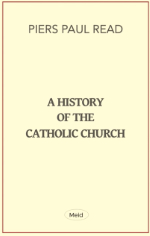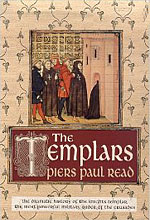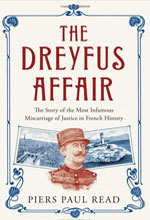History

A History Of The Catholic Church
A History of the Catholic Church tells in 127 short chapters the story of one of the world’s largest religions from its roots in Jewish history to the pontificate of Benedict XVI. In a taut narrative, it describes how the small community of those who believed that Jesus of Nazareth was the Son of God grew into a powerful institution whose patriarch, the Pope, claimed both secular and spiritual jurisdiction over all the nations of Christendom. There are chapters on the great saints of the Church, and on the major challenges it faced over the centuries with the rise of Islam, the split with the Orthodox Church, the Protestant Reformation, the French Revolution, Communism, Fascism, and today’s secularism. There are also short chapters on Catholic art, architecture, philosophy and literature. It is not an academic treatise but a selection of episodes chosen to entertain as well as inform the reader.The Templars. The Dramatic Story of the Knights Templar, the Most Powerful Military Order of the Crusades. Weidenfeld & Nicolson. London, 1999
 After the capture of Jerusalem by the Christian army assembled for the First Crusade, and the subsequent establishment of a Latin kingdom Palestine, waves of pilgrims came out from western Europe to visit the Holy Land while many of the crusaders returned home. With a lack of armed men to protect the pilgrims, a group of devout knights formed a military order and placed themselves at the disposal of the King of Jerusalem. The King gave them as their headquarters the Al Aqsa mosque on the Temple Mount: they therefore came to be known as the Knights of the Temple of Solomon, or simply the Templars.
After the capture of Jerusalem by the Christian army assembled for the First Crusade, and the subsequent establishment of a Latin kingdom Palestine, waves of pilgrims came out from western Europe to visit the Holy Land while many of the crusaders returned home. With a lack of armed men to protect the pilgrims, a group of devout knights formed a military order and placed themselves at the disposal of the King of Jerusalem. The King gave them as their headquarters the Al Aqsa mosque on the Temple Mount: they therefore came to be known as the Knights of the Temple of Solomon, or simply the Templars.
The concept of monk-knights – fighting men who took vows of poverty, chastity and obedience – was encouraged by the leading churchman of the time, St. Bernard of Clairvaux and also the Pope who made them answerable to him alone. It also suited the feudal princes of western Europe to use them as proxies. The order was endowed with properties throughout Christendom that paid for their equipment, the building of castles and the employment of mercenaries. The Templars soon became one of the richest and most powerful institutions in the western world.
For more than a hundred years, the Templars provided an effective fighting force both in in securing the Latin Kingdom of Jerusalem and in fighting further crusades; but once the Christians had been expelled from Palestine after the fall of Acre in 1291, the order lost its raison d’être. In 1307, King Phillip the Fair of France, hoping to seize its great wealth, accused the Templars of blasphemy, sodomy, and devil worship. The Templars were arrested, tortured and some, including the Grand Master, burned at the stake.
‘A highly readable and nicely paced book that draws on the lessons of modern historical scholarship while also communicating a sense of narrative excitement and drive… evocative, measured and engaging’.
Evening Standard
‘Read’s history of the Templars is magnificent in every way’.
Mail on Sunday
‘In his preface Read credits the influence of a new generation of Crusade historians… With The Templars he can now take an honored place among them.Washington Post
‘An engrossing and beautifully written work of popular history that unfolds like a well-structured crime novel’.to top
Booklist
The Dreyfus Affair. The Story of the Most Infamous Miscarriage of Justice in French History. Bloomsbury, London, 2012.
 In 1894, the contents of the waste-paper-basket of the German military attaché were smuggled out of the embassy by the French cleaning lady and given to French Military Intelligence. Among the torn, crumple and discarded papers was found an unsigned note from a French army officer offering to sell military secrets to the Germans. A comparison of the hand-writing of officers who were thought to have had access to such information came up with a Jewish officer who had served as an intern on the General Staff, Alfred Dreyfus.
In 1894, the contents of the waste-paper-basket of the German military attaché were smuggled out of the embassy by the French cleaning lady and given to French Military Intelligence. Among the torn, crumple and discarded papers was found an unsigned note from a French army officer offering to sell military secrets to the Germans. A comparison of the hand-writing of officers who were thought to have had access to such information came up with a Jewish officer who had served as an intern on the General Staff, Alfred Dreyfus.
Dreyfus was arrested but denied the charge. The investigators could find no evidence to incriminate him beyond the similarity of his handwriting but pressed charges all the same. At his court martial, held in secret, the slender proof based on the similarity of his handwriting was bolstered by scraps of other evidence that showed there was a spy in the officer corps, subtly doctored to make them point to Dreyfus. This dossier was shown to the judges but not to Dreyfus or his lawyer.
Dreyfus made a bad witness. He spoke in a dry, monotonous voice. He showed no emotion. Even the secular Prefect of Police thought he looked guilty. Dreyfus was duly convicted, sentenced to a ritual degradation and life imprisonment in a penal settlement in French Guiana, Devil’s Island.
The campaign to free Dreyfus divided the French and brought the country to the brink of civil war. At first no one outside his family doubted his guilt; but gradually evidence emerged that the true traitor was another officer, Count Walsin Esterhazy. Senior officers in the Army High Command, afraid that an admission of a miscarriage of justice would fatally discredit them and the army, insisted that they had secret, irrefutable proof of Dreyfus’s guilt; and documents were forged by officers in French Military Intelligence to convince the doubters. The Dreyfusards recruited eminent intellectuals such as Emile Zola who charged the French government of a cover-up in his polemical article, J’Accuse. The anti-Dreyfusards accused the Dreyfusards of a deliberate assault on the honour of the Army High Command at a moment when the country could find itself at war.
In 1899, Dreyfus was brought back from Devil’s Island and, after a second martial in Rennes in 1899, was again found guilty by a majority of the judges. Public opinion throughout the world was outraged and a campaign was mounted to boycott the Great Exposition in Paris planned for the following year. To save France from such a humiliation, the President, Emile Loubet, pardoned Dreyfus and declared an amnesty for all those associated with the Affair.
Though Alfred Dreyfus himself was a reserved, taciturn man, the story of his fight for justice, set against the backdrop of France’s belle époque, is filled with colourful characters – some heroic, others villainous and depraved. The Affair was of pivotal significance in European history – a clash between different views of French identity and, with the explosion of virulent anti-Semitism, a portent of the genocide that was to follow in the 20th century.
‘In his new book, Piers Paul Read admirably demonstrates why we still find the subject fascinating more than a century after it was resolved’.
Keith Lowe, Daily Telegraph
‘Piers Paul Read’s narrative is compelling… I can’t think the story could be better or more fairly told’.
Allan Massie, Spectator
‘In admirably clear-headed fashion, [Read] disentangles the facts from the myths and shows that this was a far more morally ambiguous story than has often been presented’.to top
John Preston, Daily Telegraph